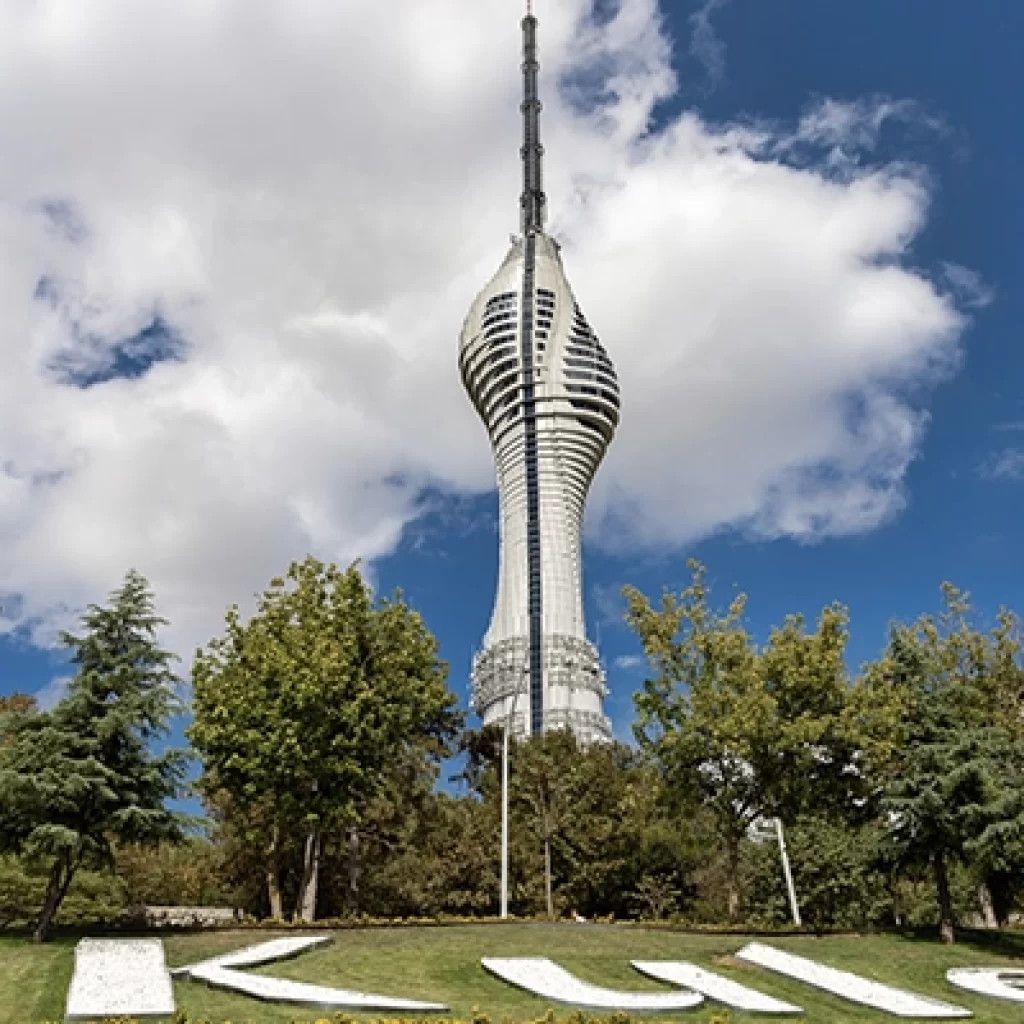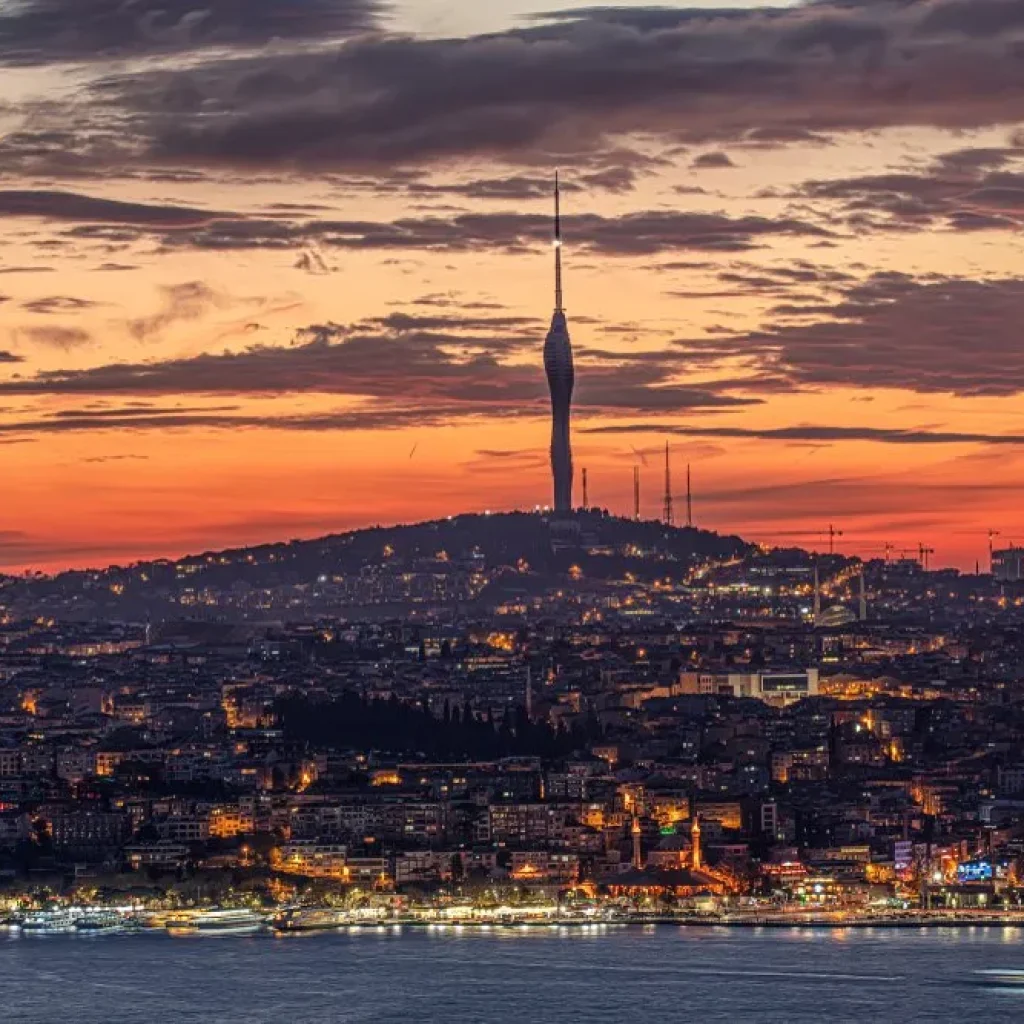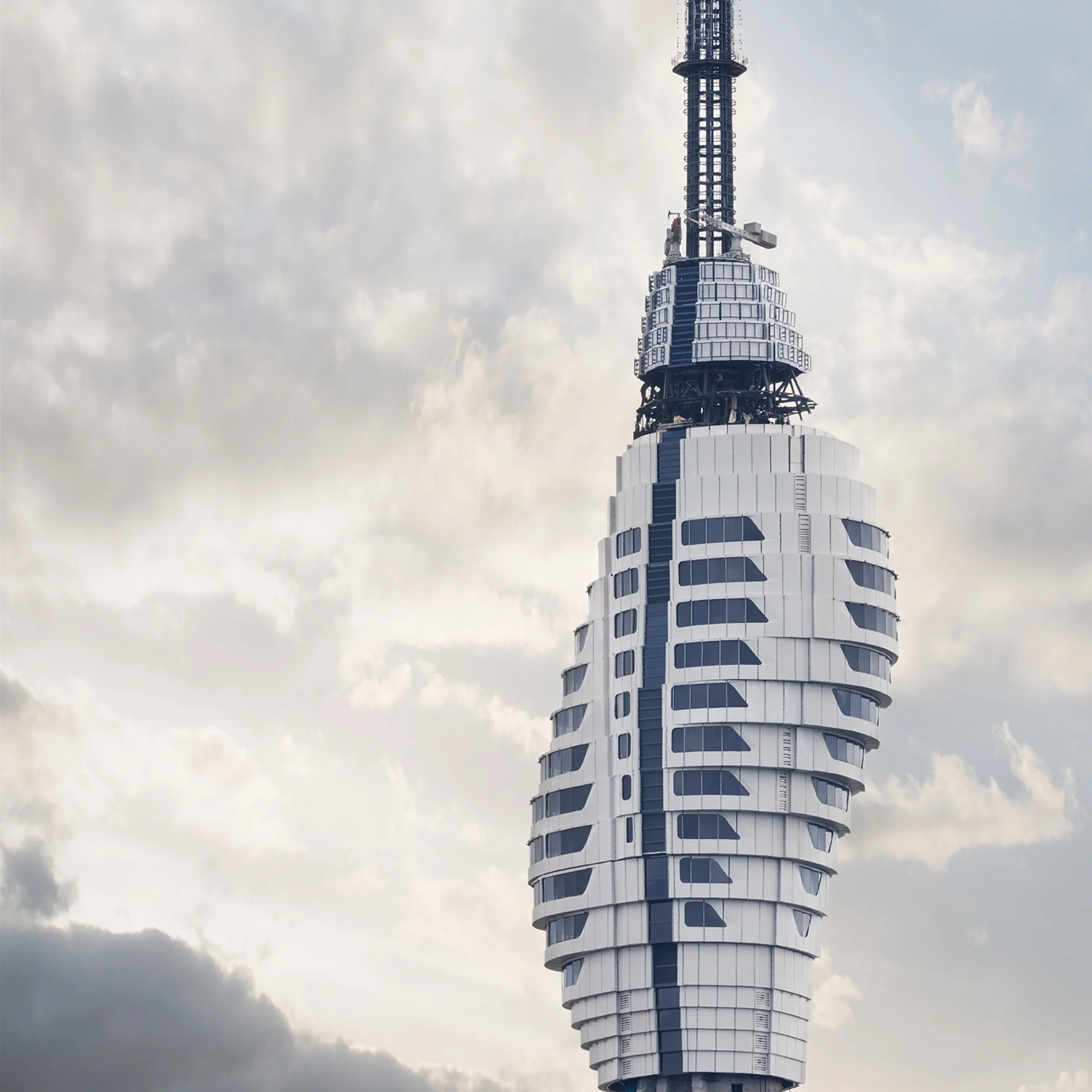Camlica Tower vs Tokyo Skytree: A Titan’s Duel
In the world of modern architecture, few structures command the sky with as much authority as telecommunications towers. They are not just functional giants; they are symbols of national ambition, technological prowess, and cultural identity. Two of the most impressive examples to emerge in the 21st century are Istanbul’s Camlica Tower and the iconic Tokyo Skytree. This is the ultimate comparison: Camlica Tower vs Tokyo Skytree.
While both serve the primary purpose of broadcasting, they are born from different cultures, designed with unique philosophies, and offer vastly different experiences. This in-depth analysis will explore their design and architecture, the incredible engineering that keeps them standing, the breathtaking views from their observation decks, and their overall impact on their respective cityscapes. We will dissect every detail to understand how these two titans of the modern world stack up against one another.
The Tale of the Tape: A Statistical Snapshot
Before we delve into the finer details, a side-by-side statistical comparison provides a clear picture of the scale and scope of these monumental structures. The numbers themselves tell a compelling story of ambition and engineering.
Quick Facts: Camlica Tower
- Official Name: Istanbul TV and Radio Tower
- Location: Istanbul, Turkey
- Completed: 2021
- Total Height: 369 meters (1,211 feet)
- Highest Observation Deck: 268 meters (879 feet)
- Primary Function: Telecommunications, observation, public attraction
- Key Material: Reinforced concrete and steel
Learn more details about Camlica Tower
Quick Facts: Tokyo Skytree
- Official Name: Tokyo Skytree
- Location: Tokyo, Japan
- Completed: 2012
- Total Height: 634 meters (2,080 feet)
- Highest Observation Deck: 450 meters (1,476 feet)
- Primary Function: Telecommunications, observation, public attraction
- Key Material: Steel frame and reinforced concrete core
Learn more details about Tokyo Skytree
From the outset, the Tokyo Skytree establishes its dominance in sheer height, standing as the tallest tower in the world and the third tallest structure of any kind. However, height is only one chapter in this story.
Architectural Philosophy: East Meets West
The visual identity of each tower is a direct reflection of its cultural and architectural heritage. They are both futuristic, yet their inspirations are worlds apart.

Camlica Tower: A Fluid, Organic Form
The design of the Camlica Tower, conceived by Melike Altinisik Architects, is a celebration of organic, futuristic forms. Its aesthetic is fluid and monolithic, avoiding the exposed-structure look common in many towers.
- Inspiration from Nature: The tower’s core inspiration is the tulip flower, a significant historical symbol in Turkish culture. This inspiration is evident in the tower’s twisting, unified structure that seems to grow from the hillside.
- Dynamic Silhouette: The tower’s body is not static. It twists and changes as it ascends, offering a different profile from every vantage point across Istanbul. This creates a dynamic and living presence on the skyline.
- A Symbol of Unification: The tower’s primary functional goal was to consolidate over 100 separate broadcast antennas into a single, elegant structure. Its design symbolizes this unification, blending technology and nature into a seamless whole.
Tokyo Skytree: Neo-Futuristic Meets Tradition
The Tokyo Skytree is a masterclass in blending hyper-modern “neo-futuristic” design with deep-rooted Japanese traditions. Designed by the architectural firm Nikken Sekkei, it is both a technological marvel and a cultural statement.
- Traditional Influences: The tower’s design incorporates two key elements from traditional Japanese aesthetics. Its color, “Skytree White,” is based on aijiro, the lightest shade of Japanese traditional indigo. The lattice structure evokes the pattern of traditional bamboo baskets.
- A Unique Footprint: The tower’s base forms an equilateral triangle, but as it rises, it gently morphs into a perfect circle at its upper levels. This transition symbolizes the softening of a sharp samurai sword (sori) and the curve of a temple pillar (mukuri).
- A Beacon of Modernity: While respecting tradition, the Skytree is unapologetically futuristic. Its sleek, powerful silhouette represents Japan’s technological leadership and its resilience, especially as it was completed after the devastating 2011 Tohoku earthquake.
Engineering Against the Elements
Both Istanbul and Tokyo are located in seismically active regions, making earthquake resistance a non-negotiable, paramount concern in the design and construction of these colossal towers.
Camlica Tower: Stability on a Historic Hill
Building a 369-meter concrete and steel tower on one of Istanbul’s highest hills required cutting-edge engineering solutions to counter both seismic threats and high winds.
- Reinforced Concrete Core: The tower is built around a massive reinforced concrete core that provides immense rigidity and stability.
- Wind Engineering: Extensive computer modeling and wind tunnel tests were conducted to analyze the effects of the region’s strong winds. The tower’s aerodynamic, twisting shape is not just for aesthetics; it helps to mitigate wind load, ensuring the comfort and safety of visitors on the observation decks.
- Deep Foundations: The tower is anchored deep into the bedrock of the Camlica hill, ensuring a solid foundation capable of withstanding significant ground movement.
Tokyo Skytree: The Pinnacle of Seismic Design
As the world’s tallest tower, located in one of the most earthquake-prone cities on Earth, the Tokyo Skytree is arguably one of the most resilient structures ever built. Its design features a system inspired by ancient Japanese architecture.
- The Central Pillar System: The Skytree’s core structural system is based on the shinbashira, the central pillar found in ancient five-story pagodas that have survived centuries of earthquakes in Japan.
- A Two-Part System: The tower consists of an outer steel frame and a central, internal reinforced concrete shaft. These two parts are structurally separate and designed to sway out of phase during an earthquake.
- Mass Damper Mechanism: The central pillar acts as a massive tuned mass damper. During an earthquake, as the outer frame begins to sway, the heavier central core sways more slowly, counteracting the movement and absorbing up to 50% of the seismic energy. This ingenious system keeps the tower stable even during intense tremors.
The View from Above: Two Megalopolises Unveiled
The primary reason millions of visitors flock to these towers is for the view. Here, the Camlica Tower vs Tokyo Skytree comparison offers two of the most spectacular, yet fundamentally different, urban panoramas on the planet.
Camlica Tower: A View Across Two Continents
The Camlica Tower offers a perspective that is geographically unique in the entire world. From its observation deck, you see the legendary city of Istanbul and the Bosphorus strait that splits it between two continents.
- The Continental Divide: The star of the show is the Bosphorus. You can watch the ceaseless traffic of ships navigating the waterway that separates Europe from Asia, a view that is simply unparalleled.
- A Tapestry of History: To the European side, the view encompasses the historic peninsula, home to the Blue Mosque, Hagia Sophia, and Topkapi Palace.
- A Sprawling Metropolis: To the Asian side, the view reveals the vast, modern, and residential expanse of Anatolian Istanbul. The 360-degree view gives a true sense of the city’s immense scale.
Tokyo Skytree: An Endless Urban Ocean
The view from the Tokyo Skytree’s 450-meter-high Tembo Galleria is an almost overwhelming spectacle. It reveals the sheer, mind-boggling scale of the world’s largest megalopolis.
- Infinite Cityscape: On a clear day, the urban sprawl of Tokyo seems to stretch infinitely in every direction, a dense and intricate web of buildings, highways, and parks.
- Iconic Landmarks: You can spot numerous landmarks, including the Tokyo Tower (its predecessor), the Imperial Palace gardens, the skyscrapers of Shinjuku, and the winding Sumida River.
- Mount Fuji on the Horizon: The ultimate prize for visitors is a clear winter day when the majestic, snow-capped cone of Mount Fuji appears on the distant horizon, a sacred symbol of Japan floating above the city.
The Visitor Experience: Beyond the Observation Deck

A trip to a modern tower is a complete attraction experience. Both towers are designed to manage huge crowds and offer amenities that enhance the visit.
Ascending the Camlica Tower
- Modern Efficiency: The experience is sleek and modern. High-speed elevators take visitors to the observation decks quickly.
- Amenities: The tower features two restaurants and a cafe with panoramic views, allowing for a leisurely experience.
- Interactive Displays: Digital, interactive screens help visitors identify key landmarks across the vast cityscape.
- Ambiance: The design is spacious and futuristic, with floor-to-ceiling windows providing unobstructed views.
Exploring the Tokyo Skytree
- A Vertical City: The base of the Skytree, known as “Tokyo Solamachi,” is a massive shopping, dining, and entertainment complex with over 300 establishments. You can spend an entire day there.
- The Ascent: The elevators are an experience in themselves, themed to represent the four seasons of Japan with artistic panels and high-speed, silent operation.
- Two Decks: There are two observation decks. The Tembo Deck at 350m features broad viewing areas, a cafe, and the “Glass Floor,” where you can look straight down. The Tembo Galleria at 450m is a sloping spiral ramp that gives the sensation of walking in the sky.
The Verdict: Deciding Between Titans
It is impossible to declare one tower definitively “better” than the other. Instead, we can crown them in different categories.
- Raw Height and Scale: Tokyo Skytree. It is nearly twice as tall, and its observation decks are significantly higher, offering a more dramatic sense of altitude.
- Engineering Marvel: Tokyo Skytree. Its shinbashira-inspired seismic damping system is a revolutionary feat of engineering that draws beautifully from ancient wisdom.
- Architectural Design: Camlica Tower. While the Skytree is elegant, Camlica’s fluid, organic, and seamless design is arguably more unique and artistically daring in today’s architectural landscape.
- Uniqueness of View: Camlica Tower. A view of an endless city is impressive, but the view of two continents separated by a legendary waterway is a singular, unforgettable experience.
- Overall Visitor Experience: Tokyo Skytree. The combination of the two observation decks, the themed elevators, and the massive Solamachi complex at its base makes it a more complete and varied tourist destination.
In conclusion, both the Camlica Tower and the Tokyo Skytree are triumphs of human imagination and engineering. The choice between them is not about which is superior, but about what you seek. For a view steeped in unique geography and a taste of futuristic, organic design, the Camlica Tower is a must-see. For an experience of overwhelming scale, cutting-edge seismic engineering, and a deep dive into modern Japanese culture, the Tokyo Skytree stands alone in a class of its own.

Comment (0)